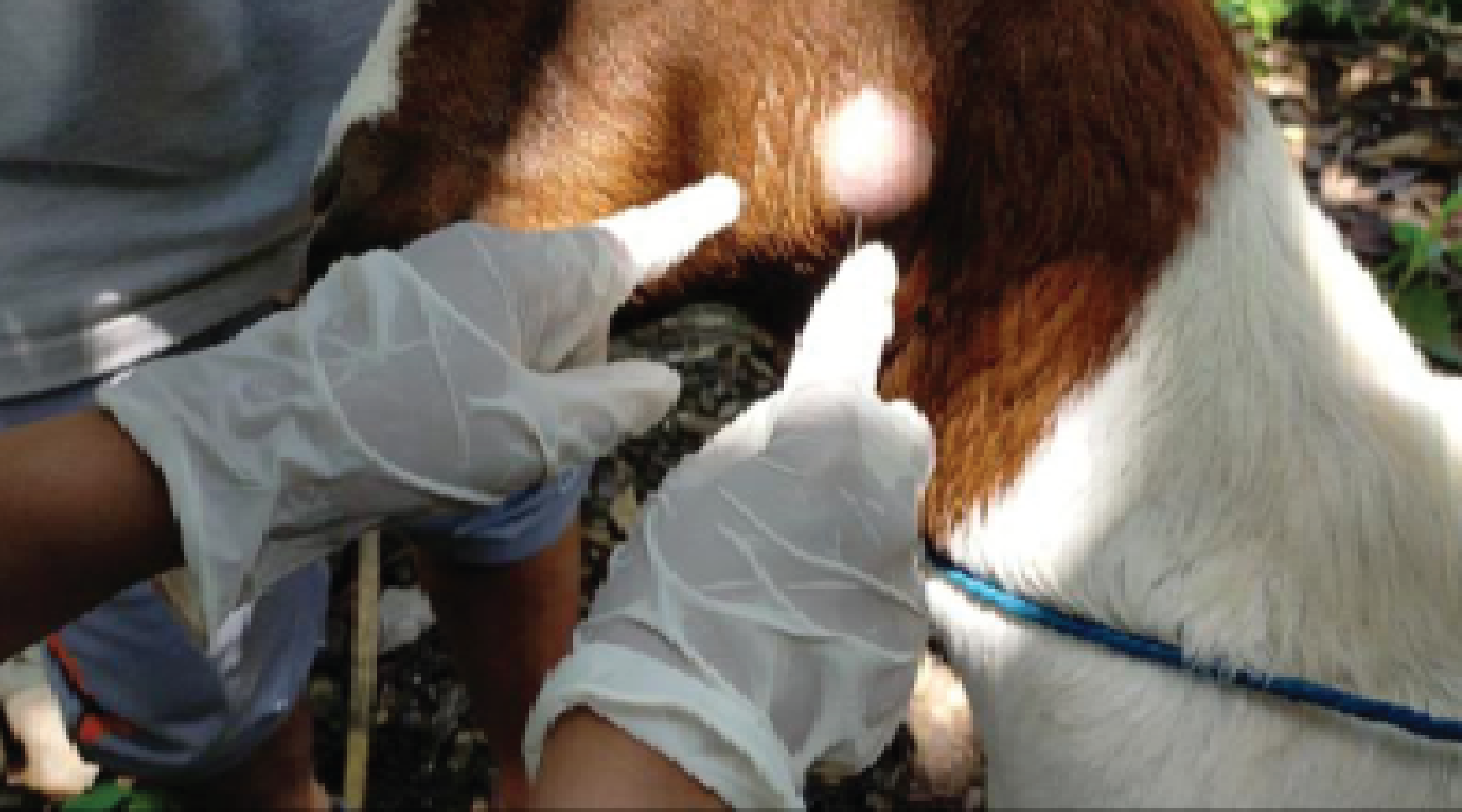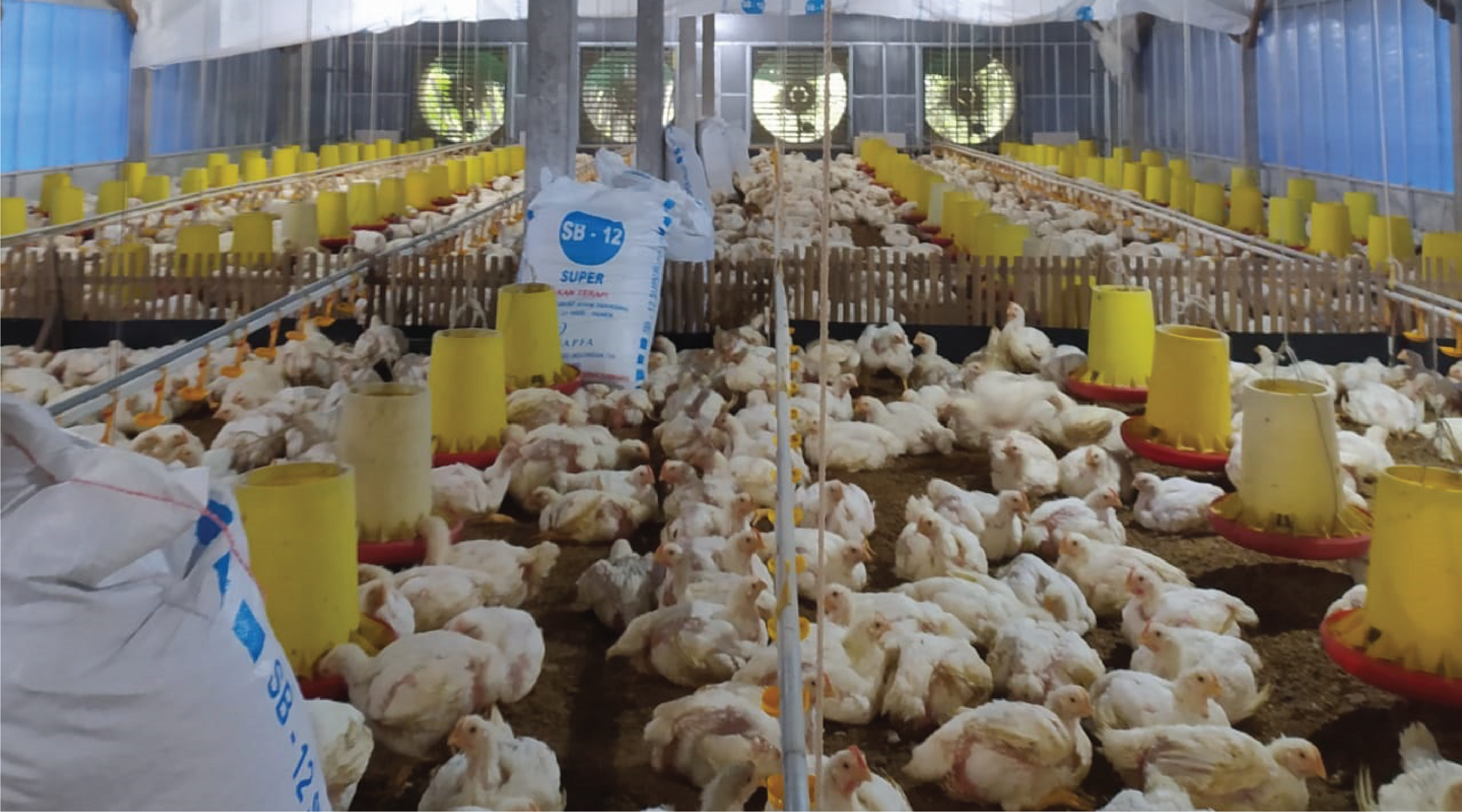Parasites in the Digestive Tract of Lion (Panthera leo) at the Safari Park of Gurun Putih Lestari Jantho, Aceh Besar

Downloads
Background: Parasitic infections in wild animals housed in captivity pose a threat to the success of animal conservation endeavors. Factors such as environmental contamination, abrupt alterations in ecological circumstances, and spatial constraints render captive animals vulnerable to stress, consequently compromising their immune systems. These infections have a notable impact on the host. Furthermore, not only captive animals but also personnel, visitors, and the public at large can be at risk of contracting parasites that have the potential to infect various species. Purpose: This study seeks to ascertain the occurrence of gastrointestinal endoparasitic infections in lions housed at the Gurun Putih Lestari Safari Park in Jantho, district of Aceh Besar. Method: Samples were collected from five lions housed at Gurun Putih Lestari Safari Park in Jantho, district of Aceh Besar. The sampling procedure involved direct collection of lion feces, which were then placed in containers with 10% formalin and labelled accordingly. Sampling was conducted three times at 15-day intervals. The fecal samples were analyzed using four methods: flotation, sedimentation, formol ether, and modified Ziehl-Neelsen method. Results: The analysis of fecal samples revealed that three adult lions were found to be infected with Toxocara cati, Toxascaris leonina, Ancylostoma spp., and Cystoisospora rivolta, while two lion cubs were solely infected with Toxocara cati and Ancylostoma spp. Notably, the modified Ziehl-Neelsen technique did not detect any gastrointestinal endoparasites. Conclusion: The findings suggest that lions housed at Gurun Putih Lestari Safari Park in Jantho, district of Aceh Besar are infected by gastrointestinal parasites. It is recommended to administer deworming treatment to lions as a preventive measure against a surge in parasitic infection among the lion population.
Aviruppola, A.J.M.K., Rajapakse, R.P.V.J., and Rajakaruna, R.S., 2016. Coprological survey of gastrointestinal parasites of mammals in Dehiwala National Zoological Gardens, Sri Lanka. Ceylon Journal of Science, 45(1), 83.
Batista, A.I.V., Lucena, G.V.C. de, Nery, T.F.L., Batista, C.C.N., Batista, J.S., Winkeler, I.E., Rolim, C.M. de M., Coelho, W.A.C., Rocha, E.L.B., Lima, V.F.S., and Pereira, J.S., 2021. Gastrointestinal parasites in wild and exotic animals from a Zoobotanical Park in Northeast of Brazil. Research, Society and Development, 10(13), e486101321255–e486101321255.
Beugnet, F., Halos, L., and Guillot, J., 2018. Textbook of Clinical Parasitology in Dogs and Cats. Servet editorial - Grupo Asís Biomedia, S.L, 1-432.
Dashe, D. and Berhanu, A., 2020. Study on Gastrointestinal Parasitism of Wild Animals in Captivity at the Zoological Garden of Haramaya University, Ethiopia. Open Journal of Veterinary Medicine, 10(9), 173–184.
Dawet, A., David, B., Dibal, M.A., Udofia, L.E. and Yakubu, D.P., 2022. A study on the gastrointestinal parasites (GIP) of wild animals found within the surrounding forests of Zuku and Rumfan Gwamna villages in Bassa Local Government Area, Plateau State, Nigeria. World Journal of Advanced Research and Reviews, 14(2), 384–392.
Eslahi, A.V., Badri, M., Khorshidi, A., Majidiani, H., Hooshmand, E., Hosseini, H., Taghipour, A., Foroutan, M., Pestehchian, N., Firoozeh, F., Riahi, S.M., and Zibaei, M., 2020. Prevalence of Toxocara and Toxascaris infection among human and animals in Iran with meta-analysis approach. BMC Infectious Diseases, 20(1), 20.
Ferdous, S., Chowdhury, J., Hasan, T., Dutta, P., Rahman, M.M., Hassan, M.M., Faruque, M.R., and Alim, M.A., 2023. Prevalence of Gastrointestinal Parasitic Infections in Wild Mammals of A Safari Park and A Zoo in Bangladesh. Veterinary Medicine and Science, 9(3), 1385–1394.
Ganager, D., Mamatha, G.S., Muralidhara, A., Jaya, N.L., and Shivashankar, B.P., 2019. Efficacy of Oxyclozanide and Levamisole Treatment on the Gastrointestinal Parasites in Captive Lions Panthera leo. Journal of Threatened Taxa, 11(15), 15043–15046.
Ghazali, M.S., Che’ Amat, A., and Abdul Aziz, N.A., 2020. Gastrointestinal Helminths in Large Felines from a Zoo in Malaysia. Pakistan Journal of Zoology, 53(2), 781–784.
Kim, H.C., Hong, E.J., Ryu, S.Y., Park, J., Cho, J.G., Yu, D.H., Chae, J.S., Choi, K.S., and Park, B.K., 2020. Morphological and Molecular Characterization of Toxocara apodemi (Nematoda: Ascarididae) from Striped Field Mice, Apodemus agrarius, in Korea. The Korean Journal of Parasitology, 58 (4), 403–411.
Loukas, A., Hotez, P.J., Diemert, D., Yazdanbakhsh, M., McCarthy, J.S., Correa-Oliveira, R., Croese, J., and Bethony, J.M., 2016. Hookworm infection. Nature Reviews. Disease Primers, 2(1), 16088.
Mir, A.Q., Dua, K., Singla, L.D., Sharma, S., and Singh, M.P., 2016. Prevalence of Parasitic Infection in Captive Wild Animals in Bir Moti Bagh mini zoo (Deer Park), Patiala, Punjab. Veterinary World, 9 (6), 540.
Moudgil, A.D., Singla, L.D., and Singh, M.P., 2017. Internal Transcribed Spancer Sequence Based Molecular Confirmation and Drug Efficacy Assessment Against Toxascaris leonina (Linstow, 1909)Infection in Asiatic lions (Panthera leo persica). Helminthologia, 54(2), 152–156.
Nagamori, Y., Sedlak, R.H., DeRosa, A., Pullins, A., Cree, T., Loenser, M., Larson, B.S., Smith, R.B., Penn, C., and Goldstein, R., 2021. Further Evaluation and Validation of The VETSCAN IMAGYST: In-Clinic Feline and Canine Fecal Parasite Detection System Integrated with a Deep Learning Algorithm. Parasites & Vectors, 14(1), 89.
Nath, T.C., Eom, K.S., Choe, S., Hm, S., Islam, S., Ndosi, B.A., Kang, Y., Bia, M.M., Kim, S., Eamudomkarn, C., Jeon, H.-K., Park, H., and Lee, D., 2021. Insight into One Health Approach: Endoparasite Infections in Captive Wildlife in Bangladesh. Pathogens (Basel, Switzerland), 10(2), 250.
Okulewicz, A., Perec-Matysiak, A., Buńkowska, K., and Hildebrand, J., 2012. Toxocara canis, Toxocara cati and Toxascaris leonina in wild and domestic carnivores. Helminthologia, 49(1), 3–10.
Petry, G., Kruedewagen, E., Kampkoetter, A., and Krieger, K., 2011. Efficacy of Emodepside/Toltrazuril Suspension (Procox® oral suspension for dogs) Against Mixed Experimental Isospora felis/Isospora rivolta infection in cats. Parasitology Research, 109 Suppl 1, S29-36.
Rahman, R., Nyema, J., Imranuzzaman, M., Banik, B., Pranto, P.S., Talukder, K., Sarkar, S.R., Nath, S.D., Islam, K.M., Nath, T.C., and Islam, S., 2023. An Update on Gastrointestinal Parasitic Infection in Captive Wild Animals in Bangladesh. Journal of Parasitology Research, 2023, 3692471.
Rostami, A., Riahi, S.M., Fallah Omrani, V., Wang, T., Hofmann, A., Mirzapour, A., Foroutan, M., Fakhri, Y., Macpherson, C.N.L., and Gasser, R.B., 2020. Global Prevalence Estimates of Toxascaris leonina Infection in Dogs and Cats. Pathogens, 9 (6), 503.
Sangpeng, J., Eamudomkarn, C., Hongsrichan, N., Artchayasawat, A., Chaisongkram, C., Ponsrila, K., Kimkamkaew, S., Laoprom, N., Boonmars, T., Sithithaworn, P., and Pitaksakulrat, O., 2023. Prevalence of gastrointestinal parasites in captive mammals at Khon Kaen Zoo, Thailand. Veterinary World, 16(12), 2416.
Santos, I.G. dos, Batista, A.I.V., Silva, W.S.I. da, Neto, M.B.O., Schettino, S.C., Oliveira, M.R., Ramos, R.A.N., Alves, L.C., Bezerra-Santos, M., and Lima, V.F.S., 2022. Gastrointestinal parasites in captive wild animals from two Brazilian Zoological Gardens. Research, Society and Development, 11(4), e28411426637– e28411426 637.
Soegiarto, E., Yesica, R., and Antika, D.D., 2022. Identification and Morphometric Analysis of Toxocara cati in Domestic Cat at Ontosenovet Animal Clinic Malang. Veterinary Biomedical and Clinical Journal, 4(1), 30–37.
Copyright (c) 2025 Authors

This work is licensed under a Creative Commons Attribution-ShareAlike 4.0 International License.
- The journal allows the author to hold the copyright of the article without restrictions.
- The journal allows the author(s) to retain publishing rights without restrictions.
- The legal formal aspect of journal publication accessibility refers to Creative Commons Attribution Share-Alike (CC BY-SA).

Journal of Applied Veterinary Science and Technology is licensed under a Creative Commons Attribution-ShareAlike 4.0 International License





























